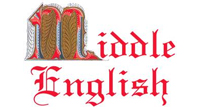Old English. Norse influence. Celtic influence
Norse influence
The second major source of loanwords to Old English was the Scandinavian words introduced during the Viking invasions of the 9th and 10th centuries. The area of land under Viking control along the eastern coast of England and Scotland was called the Danelaw. The Vikings spoke Old Norse, a Germanic language related to Old English. The influence of Old Norse on the English language has been profound: responsible for such basic vocabulary items as sky, leg, skin, skull, get, give, fellow, take, die, birth, root, rake, race, anger, till/until, to and fro, the pronoun they, the verb form are, and hundreds of other words, including the names of settlements along the eastern coast of England and Scotland: Appleby, Whitby, Derby, Rugby, Whitby, Selby, Grimsby (byr – village); Scunthorpe, Grimethorpe (thorpe – farms).
Celtic influence
Celtic influence on the English language is mostly apparent through place names: Brill, Breedon, Brewood, Pensax (bre and pen mean hill); Combe or Coombe are used as part of many place names (kumb meant valley); tor means rock, and is used as part of names for some peaks: Hay Tor, Hound Tor. The place name Bodmin is a compound of the Cornish words bod «dwelling» and monegh ‘monks’.
Thus, unlike modern English, Old English is a morphologically rich language and is spelled as it is pronounced. It maintains several distinct cases: the nominative, accusative, genitive, dative and instrumental. The word order of Old English is to be subject-verb-object (SVO) as in modern English and most Germanic languages. The word order of Old English, however, was not important because of the rich morphology of the language. As long as declension (склонение) was correct, it did not matter whether you said, «My name is…» as «M?n nama is…» or «Nama m?n is…» The runic alphabet (also known as futhorc or fu?orc) used by Old English was soon replaced with the Latin alphabet. Old English words were spelt as they were pronounced. The “silent” letters in many Modern English words were pronounced in Old English: for example, the c in cniht, the Old English ancestor of the modern knight, was pronounced. Spelling was extremely variable and reflected differences in the phonetics of the writer’s regional dialect. Thus, for example, the word and could be spelt either and or ond.
Old English literature is quite scant. Some of the most important surviving works of Old English literature are Beowulf, an epic poem; the Anglo-Saxon Chronicle, a record of early English history; and Caedmon’s Hymn, a Christian religious poem. There are also a number of prose works, such as sermons and saints’ lives, biblical translations, legal documents, and practical works on grammar, medicine, and geography. Still, poetry is the heart of Old English literature. Nearly all Anglo-Saxon authors are anonymous, with a few exceptions, such as Bede and Caedmon.
 Latin influence on English
Latin influence on English Old English. History
Old English. History Middle English
Middle English